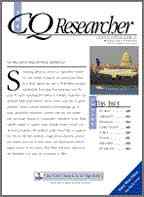Report Outline

Development of American Farm Machinery
The Combined Harvester-Thresher
The Cotton Sled and Other New Equipment
Social and Economic Results of Machine Farming Unofficial estimates of the total labor supply required for harvesting throughout the western wheat area indicate that 80,000 to 90,000 fewer men will be needed this season than were ordinarily employed a few years ago to bring in the wheat harvest. In 1924 the United States Employment Service directed 53,923 men to the harvest fields to assist in meeting the peak demand for seasonal farm labor. In 1926, with a wheat crop of approximately the same size, the number of men provided dropped to 33,227 a reduction of more than 35 per cent and a further notable reduction in the demand for outside itinerant farm workers is anticipated this year. The steady decline in harvest labor requirements that has been in evidence during the last four or five years is credited to the rapid increase in the use of improved agricultural machinery particularly of the unit harvester-thresher, or “combine”, in the principal wheat areas of the West. New and Improved Agricultural Machinery The combined harvester-thresher has been in use in the semi-arid regions of the Pacific States for many years, but it is only since 1922 that the machine has begun to be widely employed in the grain growing areas of the Great Plains. Now that its efficiency and economy has been demonstrated by several seasons use, the combine is working a revolution in the grain raising industry of the American Prairies, and it promises to have a similar effect in Canada. While the introduction of the combine is probably the most striking step in the mechanization of American agriculture since the adoption of the self-binding reaper, there have been other mechanical changes in progress during recent years that are of far-reaching importance. In an attempt to eliminate the costly and laborious task of picking cotton by hand, farmers in Texas and Oklahoma, harvested about 1,000,000 bales of lint last year with the cotton sled a mule or horse drawn device for stripping cotton bolls from the stalks. Mechanical corn pickers and huskers are steadily reducing labor requirements on Corn Belt farms. Rural electrification is proceeding meanwhile, and the number of tractors on the farms is growing rapidly. These and other developments are tending to convert the American farmer into a manufacturer, rather than a grower, of foodstuffs and raw materials.
ISSUE TRACKER for Related Reports BROWSE RELATED TOPICS: Agricultural Research